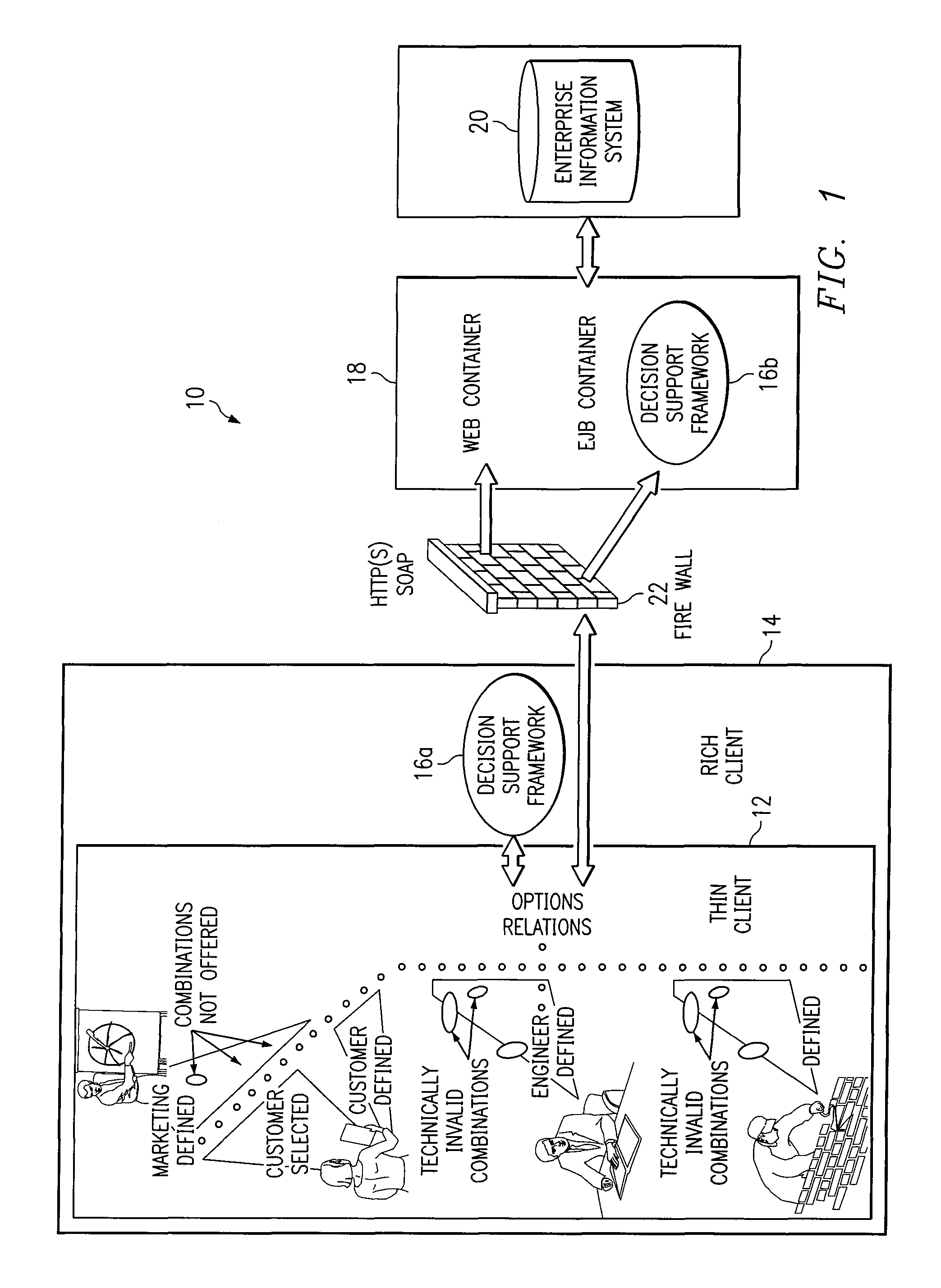Integrated decision support framework for collaborative product development
a decision support framework and product development technology, applied in the field of product development management, can solve the problems of no existing technology that can integrate these diverse input drivers, and each one cannot be independently resolved, and achieve the effect of substantially reducing the disadvantages and problems of previous collaborative product development techniques
- Summary
- Abstract
- Description
- Claims
- Application Information
AI Technical Summary
Benefits of technology
Problems solved by technology
Method used
Image
Examples
Embodiment Construction
[0014]The preferred embodiment of the present invention and its advantages are best understood by referring to FIGS. 1-4 of the drawings, like numerals being used for like and corresponding parts of the various drawings.
[0015]Essentially, in accordance with one example embodiment of the present invention, an integrated decision support framework is provided, whereby different types of decision-drivers from numerous sources can be converted into a unified decision network including, for example, both mathematical and node-edge graph representations. A graph-theoretic algorithm may be applied to the large problem (unified decision network) to detect and separate strongly-connected components. The strongly-connected components represent sub-problems that must be solved simultaneously. A dependency propagation technique may be used to properly order the sub-problems so they can be processed and solved sequentially and correctly. Each strongly-connected component (small sub-problem) can ...
PUM
 Login to View More
Login to View More Abstract
Description
Claims
Application Information
 Login to View More
Login to View More - R&D
- Intellectual Property
- Life Sciences
- Materials
- Tech Scout
- Unparalleled Data Quality
- Higher Quality Content
- 60% Fewer Hallucinations
Browse by: Latest US Patents, China's latest patents, Technical Efficacy Thesaurus, Application Domain, Technology Topic, Popular Technical Reports.
© 2025 PatSnap. All rights reserved.Legal|Privacy policy|Modern Slavery Act Transparency Statement|Sitemap|About US| Contact US: help@patsnap.com



